David Silva, the sculptor behind the Creative Beast line of model kits, ran a Kickstarter campaign in April 2016 to produce the Beasts of the Mesozoic “Raptor” Series, a range of large-scale dromaeosaurid action figures that he strove to make accurate, detailed, and posable. The campaign ended in May 2016 with a prodigious fundraising total and a much larger scope than first anticipated. Around the middle of January 2018, the first Kickstarter backers started getting the first wave of figures. The next phase is expected in February or early March, later than planned but not really out of the ordinary for a Kickstarter. The first set of shipments consisted of the customizable, unpainted “Build-a-Raptor” kits, the nestling three-packs, and the environment accessory packs. Today’s review is for one of the latter, the Desert Environment accessory pack with exclusive Mononykus olecranus action figure. We’re off to a strong start, with the box featuring a very nice painting by Jonathan Kuo.
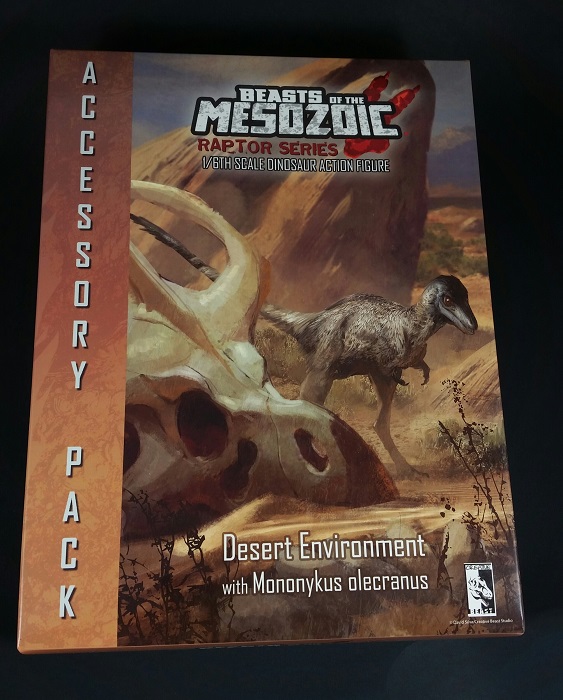
Upon lifting the lid, all the large elements are fixed in a plastic tray. This is an easy one to open; the other sets have a lot of twist-ties, but all these things just pop right out. Some smaller pieces are in a small bag under the tray.
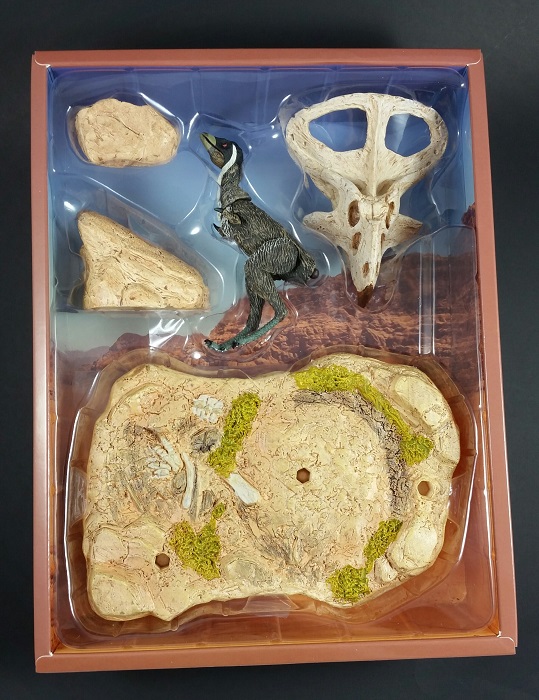
The star of the show is Mononykus olecranus, a small alvarezsaurid known from the Nemegt Formation in Mongolia, which during the Late Cretaceous was in roughly the same position as it is now. However, the climate was different, and whereas much of Mongolia is arid or semi-arid now, at the time Mononykus lived there it would have been dominated by conifer forest. Mononykus shared this environment with other small theropods, as well as giants like Deinocheirus, Tarbosaurus, Saurolophus, Nemegtosaurus, and Therizinosaurus. This figure is a little less than 16 cm long, so it agrees with the stated 1:6 scale. It looks quite accurate, with the spindly legs and stubby, single-clawed arms (Mononykus means “one claw” in Greek). Alvarezsaurids had other digits on the forelimb, but they were so tiny that they would be hidden within the plumage in life.
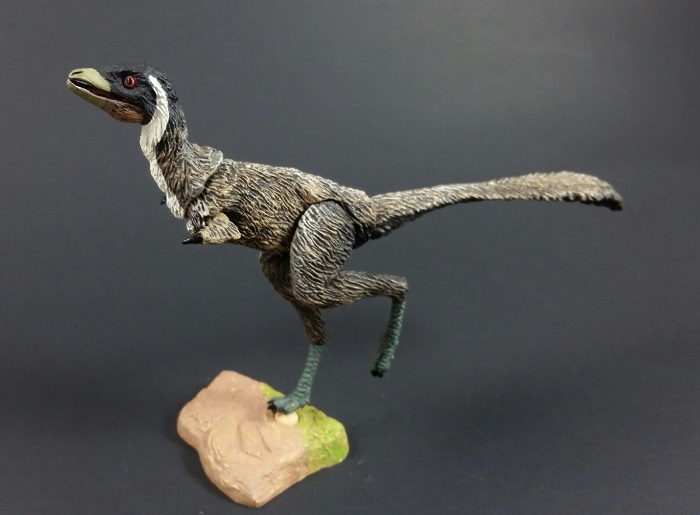
It doesn’t matter too much that Mononykus didn’t live in deserts, as the figure comes with its own little stand-alone base, so you can use it in settings other than the desert scene. It takes a little effort and a precise angle to get the skinny peg into the socket in the foot. I always feel like I’m going to break it, but mine has so far held up to repeated use.
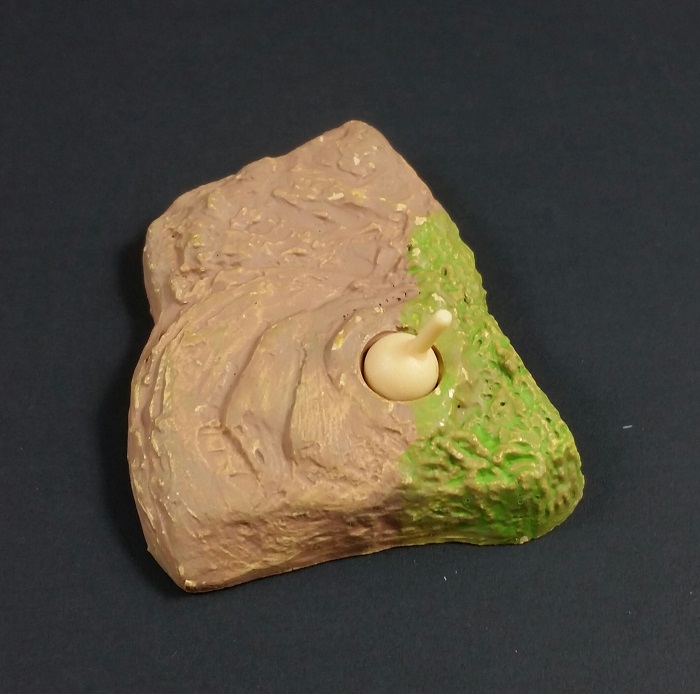
The figure itself is a looker, wearing the plumage of an emu (the inspiration Mr. Silva used). The hips and shoulders are mobile in two planes, and the head appears to be ball-jointed. The tail is a separate ball-jointed piece that you pop into place. The lower jaw is hinged, so there are seven total points of articulation. The first toy version of an alvarezsaurid (there is an impossibly tiny model kit of the same genus) is, happily, quite good.
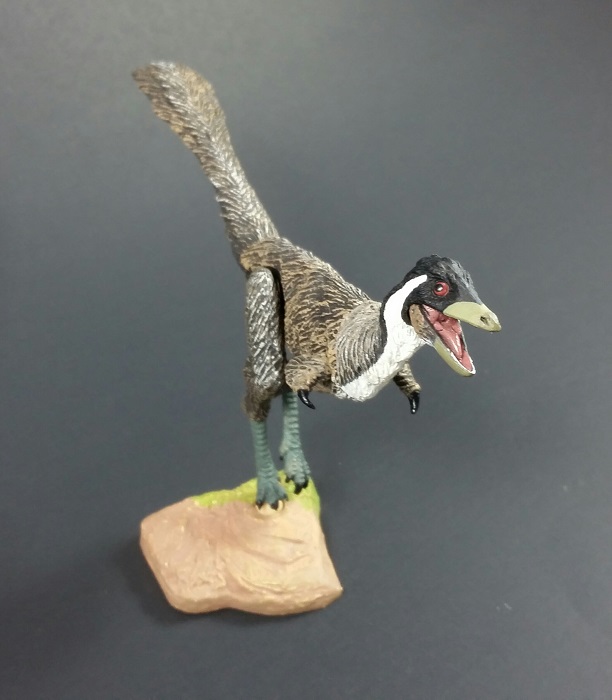
The upper jaw seems to have been squished at some point. You can see in upper or lower view that it twists to the left.
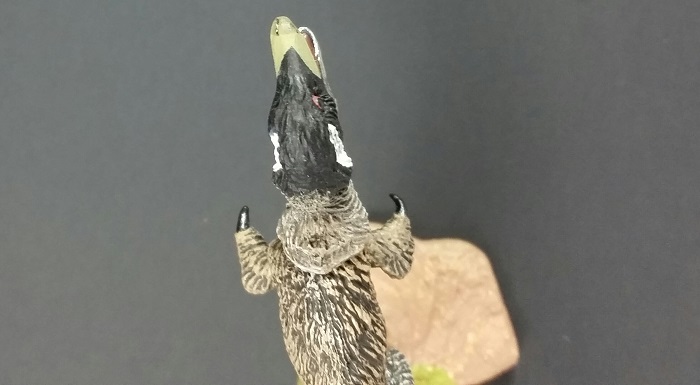
The same twisting prevents the jaw from closing cleanly. I think this is something that can be fixed by treating the toy with hot water, but I’m not the only one who’s had a problem like this.
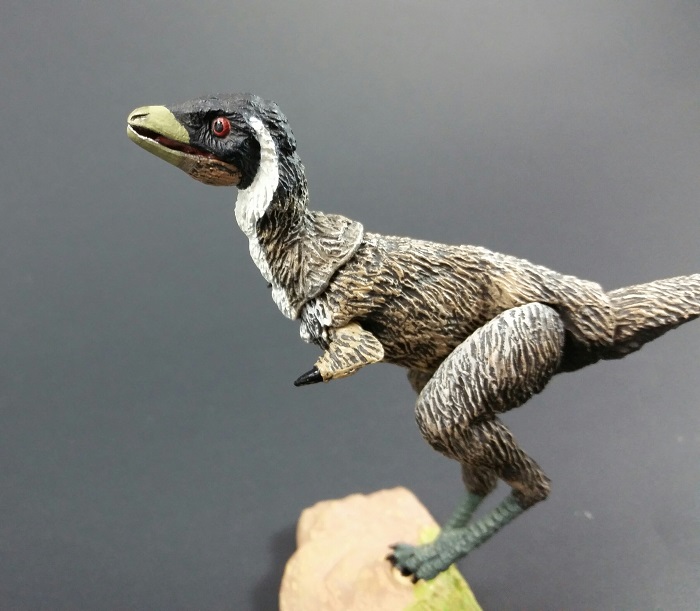
From some angles it looks a little as though it’s sneering.
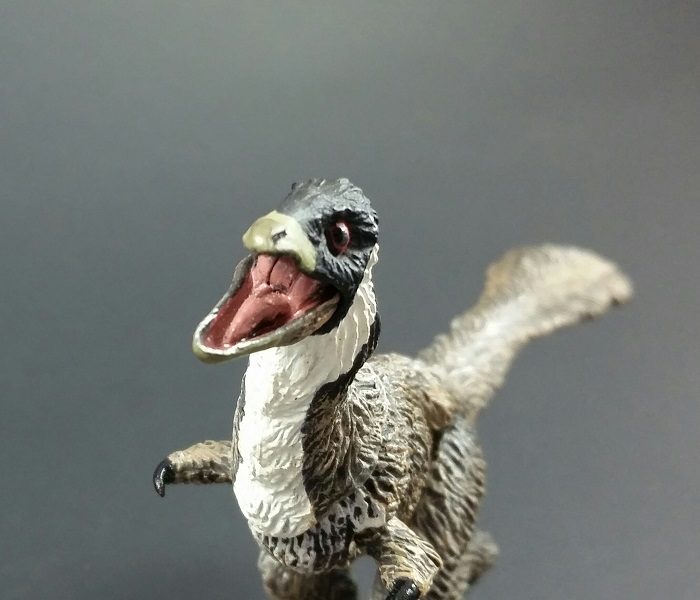
Now on to the accessories. The base features some trampled vegetation, some stones, and a mostly-buried Protoceratops skeleton, which definitely adds some visual interest. The sockets receive the same ball-and-peg pieces that the Mononykus foot does, and you can use them to secure other accessory elements in place, or to pose the action figures wherever you want. There are also some transparent rods and small saddle pieces that you can use to pose figures in jumping poses.
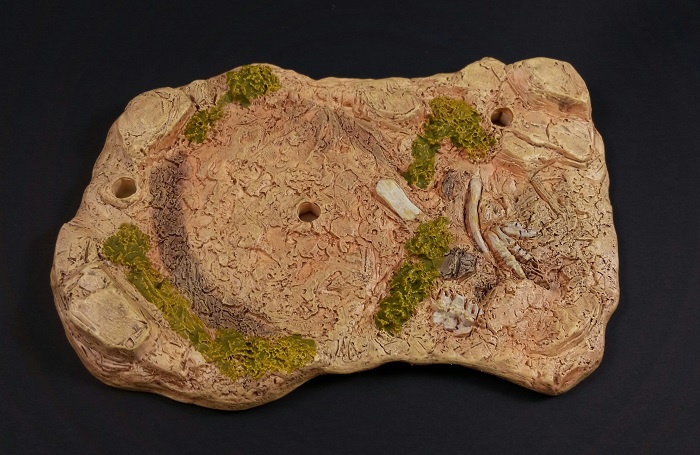
There are two larger stones, a nest of eggs, a loose hatching chick, and a Protoceratops skull. It’s a decent set of accessories, although I think it would have benefited from the inclusion of some other living elements. Leaving aside the fact that Mononykus lived in forests, its desert relative Shuvuuia would have found itself surrounded by a reasonable amount of greenery, including oddities like gnetophytes. The formation that yielded Shuvuuia even yielded crocodiles and frogs. Some other small animal from the formation would have been welcome, maybe a small mammal (Zalambdalestes?), pterosaur, or lizard (Saichangurvel?) to perch upon the rocks.
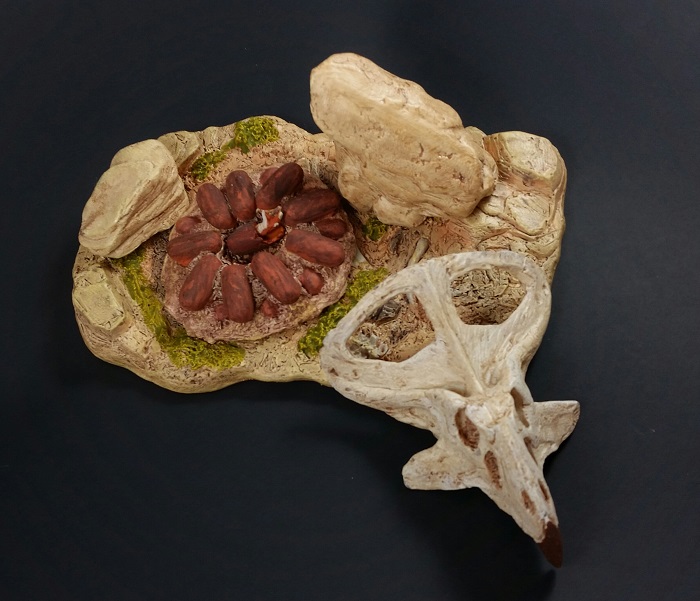
The Protoceratops skull looks freshly dead, with a keratin sheath still on the beak. The inclusion of Protoceratops is mildly anachronistic, since Protoceratops lived a few million years prior to Mononykus. But, hey, just pretend it’s Shuvuuia and you’re all set–it might as well be true, since Mononykus is known from pretty fragmentary remains and hence some of its appearance is inferred based on Shuvuuia.
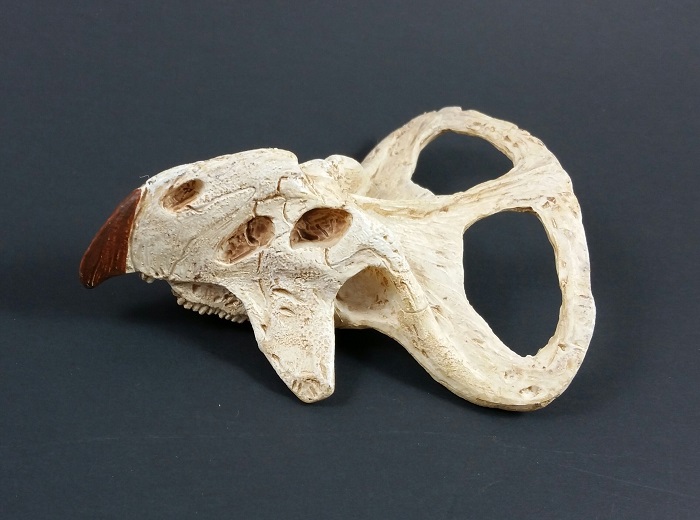
This little hatching chick is pretty cute and the level of detail is pretty solid. I don’t get too excited about baby dinosaurs and eggs, and their inclusion in every accessory pack is a little ho-hum even though they’re painted a different color in each set. But without the ability to re-use elements, these figures could probably not have been made at the price they were sold for. Moreover, there’s enough other great stuff in these sets that I’m pretty happy with them.
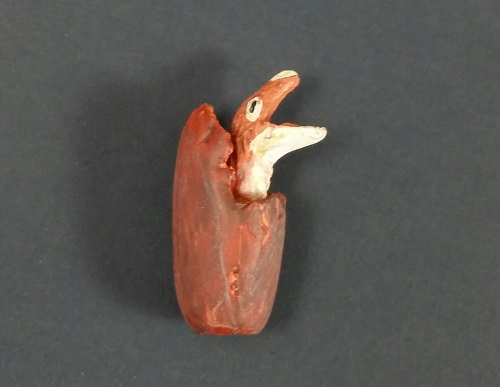
There’s a lot of small parts in the accessory packs, so I wouldn’t recommend them for small children. But I recommend them to anyone else: kids who know how to take care of nice toys and won’t choke on small pieces, adult action figure collectors, adult dinosaur collectors. Probably even bird enthusiasts would enjoy these. As of this writing, only people who backed the Kickstarter or pre-ordered them from Backerkit are receiving them, but online dinosaur shops such as Dan’s Dinosaurs, Everything Dinosaur, and Creative Beast’s own shop will have them in stock very soon.
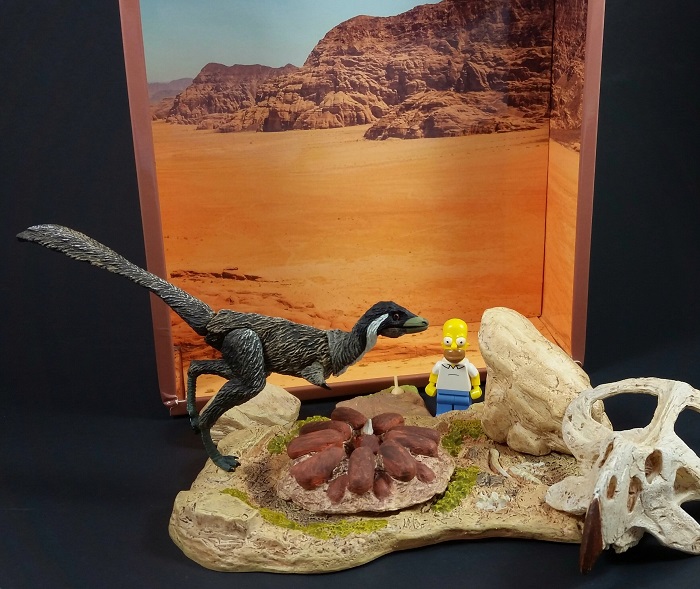
Disclaimer: links to Ebay and Amazon on the DinoToyBlog are affiliate links, so we make a small commission if you use them. Thanks for supporting us!




Nice review, but…
According to Wikipedia (assuming they got it right,) Mononykus was over three feet long. While I do appreciate the sheer drama of the enormous Protoceratops skull, the size difference between the adult Mononykus and the skull remains a remarkable incongruity if one is meant to take this diorama as gospel. Parvicursor, on the other hand…
Does anyone know which is correct?
I’m not sure I understand your question. You’re asking whether the scale of the Mononykus is correct, or that of the Protoceratops skull is?
I used a total length of 1m to estimate the scale of the Mononykus figure, and it’s about 1:6 by that estimate. For the skull to also be 1:6, it would have to represent an animal with a skull about 57 cm long measured in a straight line from the tip of the rostrum to the farthest margin of the frill. That’s quite large but well within the range of known skull sizes for Protoceratops andrewsi, according to Maiorino et al. 2015 (http://journals.plos.org/plosone/article?id=10.1371/journal.pone.0126464).
I fully expect some of the figure in this series to be a bit off-scale, especially since they share parts. However, I think the elements in this set are pretty good in that respect.
Thanks, guys, and thank, Faelrin, for letting me take a crack at it. Looking forward to your other reviews in the series 🙂
That was a really good thorough review. I can’t wait to have my Velociraptors on display with this set. That Protoceratops skull serves as a good sneak peak for the next line too.
Great review. Can’t wait to see more of this series reviewed.